
- Aug 08, 2025
Afghanistan’s Import Landscape: Trade Partners, Products, and Economic Outlook
Due to its landlocked location and persistent sociopolitical unrest, the nation is mostly dependent on trade routes with its neighbors to obtain necessities. As per Afghanistan Import Data by Import Globals, foreign items that satisfy the daily needs of Afghanistan's industries and residents, ranging from food grains to petroleum products and medications, influence the country's domestic market.
Afghanistan's import patterns over the last five years (2020–2024) have shown both robustness and fragility. As per Afghanistan Export Data by Import Globals, trade has steadily stabilized despite the significant upheavals that followed the political shift in 2021, particularly with important allies like China, Iran, and Pakistan. Afghanistan's import statistics, key economic indicators, main import partners, and top imported goods are all examined in detail in this blog. It also examines the strategic ramifications of this reliance and provides an outlook on the country's trading practices.
General Economic Indicators of Afghanistan
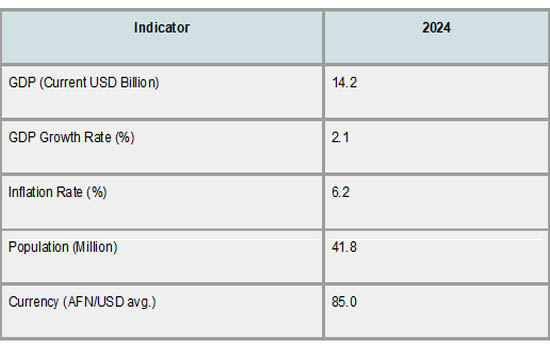
The economic statistics for Afghanistan from 2020 to 2024 show a period of instability and a sluggish recovery. Following the political unrest, the nation's GDP drastically shrank in 2021, falling from USD 20.1 billion in 2020 to just USD 14.3 billion. As per Afghanistan Import Export Trade Data by Import Globals, economic growth was further hampered by the removal of foreign funding, which had previously been the mainstay of Afghanistan's budget. Global supply problems and domestic volatility caused inflation to soar in 2022, while low industrial output and a decline in public sector jobs kept unemployment high.
Although gradual, there are indications of stability in 2023 and 2024 despite these difficulties. A little decrease in unemployment and modest GDP growth indicate that local markets and trade activity are progressively responding. As per Afghanistan Import Custom Data by Import Globals, Afghanistan's youthful and expanding population presents opportunities for a labor-driven economic recovery, but significant advancements are still thwarted by sanctions, a lack of official banking connections, and inadequate infrastructure. All things considered, the economic data show a resilient but weak economy that depends significantly on imports and international trade links for survival and recovery.
Afghanistan Import Data (2020–2024)
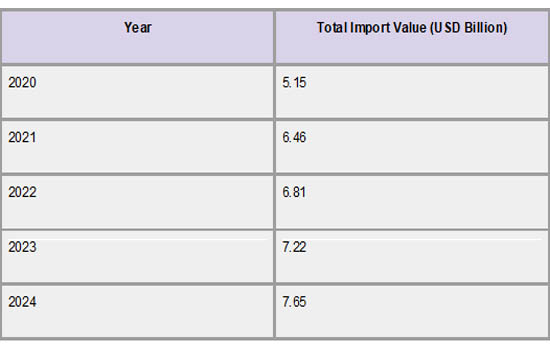
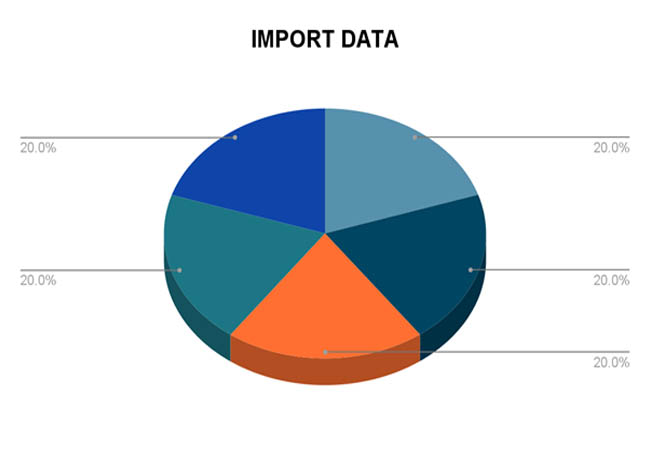
Afghanistan's import levels between 2020 and 2024 show both a slow recovery and economic instability. Despite the impending political change, the nation imported products valued at about USD 5.15 billion in 2020, and this amount marginally increased in 2021. As per Afghanistan Import Trade Analysis by Import Globals, the major shock, though, came in the middle of 2021 when the government fell, briefly disrupting banking and international trade. Unexpectedly, import numbers increased in 2022 and 2023 as land-based trade, especially with Iran and Pakistan, restarted under new governmental oversight. Even in a constrained economic climate, the import flow remained consistent due to the robustness of cross-border trade and the high demand for necessities.
Despite the lack of official international recognition, Afghanistan's total imports are predicted to reach approximately USD 7.65 billion by 2024, indicating a clear normalization of commerce. As per Afghanistan Export Data by Import Globals, a large portion of this rise can be ascribed to the nation's inability to generate enough fuel, staple foods, and medications locally. The import ecology has been maintained in large part by informal trade arrangements, neighboring nations' leniency, and the steady improvement in customs operations. Afghanistan is still extremely susceptible to changes in international prices, political situations, and border disputes, all of which can have an immediate impact on its import stability.
Major Import Partners of Afghanistan
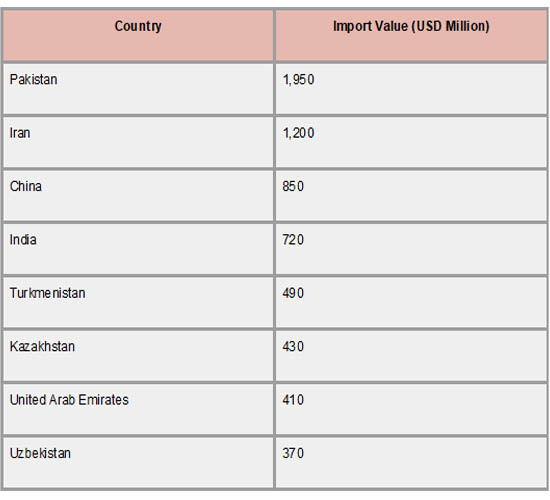
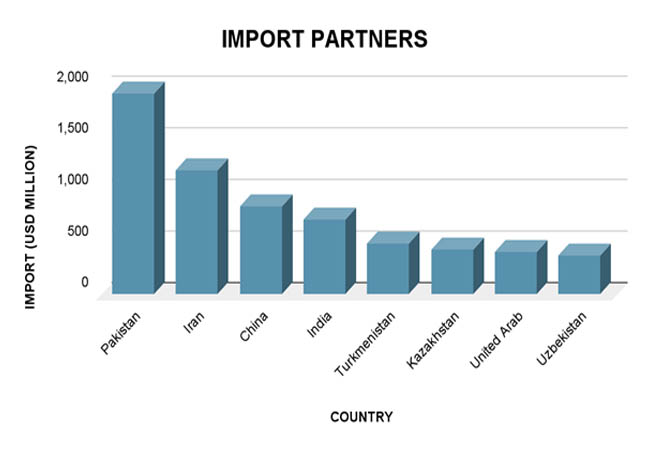
As per Afghanistan Import Data by Import Globals, Afghanistan's neighbors have a significant impact on its trade connections because of its advantageous location in South-Central Asia. As of 2023, Afghanistan's biggest import partner is Pakistan, with trade totaling around USD 1.95 billion. Pakistan is the most important entry point for Afghan imports, particularly for food, fuel, and building supplies, due to their shared borders, cultural links, and easily accessible commercial routes. Iran comes in second, supplying goods like food, building materials, and petroleum products valued at about USD 1.2 billion a year. Despite international sanctions, cross-border trade with Iran continues because both parties have practical needs.
India and China are also significant importers to Afghanistan. China contributes over USD 850 million in imports with its inexpensive electronics, machinery, and manufactured items. In contrast, India contributes over USD 720 million in textiles, agricultural products, and necessary medications. As per Afghanistan Import Trade Statistics by Import Globals, because of their energy exports and easy access to logistics, Central Asian nations like Kazakhstan, Uzbekistan, and Turkmenistan are becoming more and more significant partners. These regional connections represent deeper geopolitical dependencies, as commerce routes serve as diplomatic channels, in addition to meeting Afghanistan's consumer demands.
Major Import Product Categories
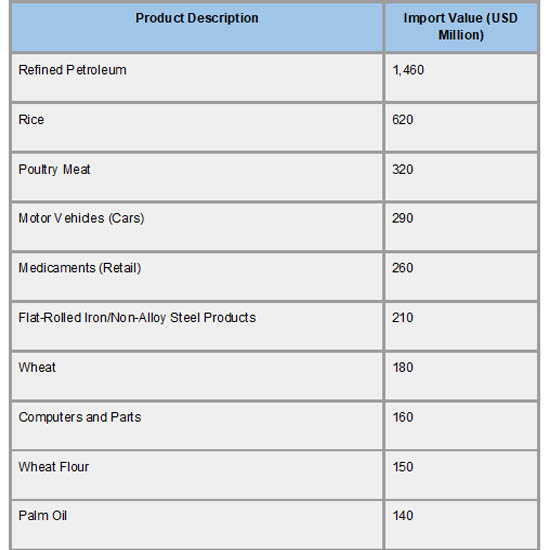
Essential goods that sustain Afghanistan's infrastructure and fundamental necessities make up the majority of its import basket. Refined petroleum (HS Code: 2710) is the most important of these, with imports estimated to be worth USD 1.46 billion in 2023. As per Afghanistan Import Shipments Data by Import Globals, Afghanistan is nearly dependent on imported fuel for heating, power generation, and transportation since it cannot refine its oil. In addition to fuel, the two most important agricultural imports that meet the population's demands for food security, particularly in rural and conflict-affected areas, are rice (HS Code: 1006) and wheat (HS Code: 1001). Because of the undeveloped healthcare production sector, pharmaceutical products (HS Code: 3004) are also imported in large quantities.
Motor vehicles (HS Code: 8703), particularly used cars from the United Arab Emirates and Central Asia, and iron and steel materials (HS Code: 7210) used in construction are other high-demand categories. Additionally, as per Afghanistan Import Export Trade Analysis by Import Globals, due to the needs of the private sector and the gradual but increasing digital connectivity, Afghanistan imports computers and electronic components (HS Code: 8471). Afghanistan's reliance on imported food processing and cooking supplies is further demonstrated by the use of palm oil (HS Code: 1511) and wheat flour (HS Code: 1101). Trade continuity is essential for national stability since these categories show both the economic dependence on outside sources and the deficiency of home production capacity.
Strategic Implications of Afghanistan’s Import Trends
Afghanistan's import patterns highlight both its geopolitical vulnerability and its extreme economic dependence. Due to its low level of industrial and domestic production, the nation is mostly dependent on its neighbors for necessities like food, medicine, and fuel. As per Afghanistan Export Import Global Trade Data by Import Globals, because of this dependence, nations like China, Pakistan, and Iran have a great deal of strategic clout and can use trade policies and border controls to affect Afghanistan's political and economic choices. Furthermore, Afghan markets may experience severe and fast repercussions from disruptions in global supply chains or regional interactions, which frequently result in shortages, inflation, and public discontent. Afghanistan's long-term economic stability depends on trade security and regional diplomacy because of the lack of diversification in its import sources and the informal character of much of its trade, which further increases risks.
Conclusion
Afghanistan's import situation between 2020 and 2024 shows a country fighting for its life in the face of geopolitical unpredictability and economic fragility. Through regional alliances and unofficial trade networks, the nation has been able to maintain a consistent supply of necessary imports despite internal difficulties and low industrial output. However, as per Afghanistan Import Export Global Data by Import Globals, Afghanistan is extremely vulnerable to political upheavals and external shocks due to its limited import portfolio and strong reliance on a small number of surrounding nations. To create a more robust and independent Afghan economy in the future, it will be essential to improve domestic production capacities, diversify import sources, and fortify trade infrastructure.
If you are looking for detailed and up-to-date Afghanistan Import Data, you can contact IMPORT GLOBALS.
FAQs
Que. What is Afghanistan’s top imported product?
Ans. Refined petroleum (HS Code: 2710) is the top import, essential for energy and transportation.
Que. Who is the largest trading partner of Afghanistan?
Ans. Pakistan remains the largest import partner due to proximity and open trade corridors.
Que. How much did Afghanistan import in 2023?
Ans. Afghanistan imported goods worth approximately USD 7.22 billion in 2023.
Que. Which sectors dominate Afghanistan’s imports?
Ans. Energy, agriculture (rice, wheat), healthcare (medicines), and automotive are key sectors.
Que. Has Afghanistan’s import volume increased since 2020?
Ans. Yes, imports have steadily grown, indicating recovery from the post-2021 economic dip.
Que. Where to obtain detailed Afghanistan Import Data?
Ans. Visit www.importglobals.com or email info@importglobals.com for more information on up-to-date Afghanistan Import Data.
